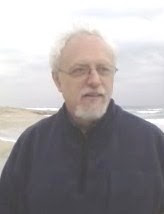
Our first day back in Istanbul was a day of contrasts and an ethical challenge for me.
We spent most of the morning window shopping in the high-end market district and square called Taksim. This was the area I had visited the week before. We stopped by a couple of churches, including a Catholic Church named for the Franciscan, St. Anthony of Padua.
A major highlight of the morning for me was our stop at the Karakoy Jewish Museum. We reached the museum by taking the Funicular tram down from the hilltop shopping area, and then walking to a major traffic and light rail intersection at the end of the Galata Bridge.
The museum was hidden away at the end of a side street with no exit.
The museum consisted of two floors, and contained two Torah scrolls and a number of other religious items, but more importantly, it present a series of elaborate posters explain the history of Jews in Turkey. As I believe I mentioned in an earlier blog, Turkey is 99% Muslim. There are only an estimated 100,000 non-Muslims in this large country with a population of 80 million. The 100,000 non-Muslims comprise 25,000 Jews and 75,000 persons who are Christians or me3mbers of other religions.
The most important piece of information I encountered was something I already knew, but of which I was glad to be reminded. In 1492 when the Catholic Church was burning Jews and non-believers at the stake, and when it expelled the Jews from Spain, the Sultan of what is now Turkey not only invited the Jewish expatriates from Spain to his own land, but actively worked to bring them to their new home, where, it seems they have lived happily, if anonymously for half a millennium and more.
As I was leaving the museum I encountered the guard at the front door. He didn’t speak English and my Turkish was too small to be of help, but through sign language I asked him if he was a Jew. He nodded. I then gave him one of our blue pins with the symbols of Judaism, Islam and Christianity sitting in the company of what we know as the peace sign. I pointed to that peace sign and said “barish” the Turkish word for peace. This man who a moment earlier was very quiet and reserved suddenly became animated. He put the pin on. I asked if I could take his photo and he again gave an affirmative sign, but motioned for me to wait. He rushed into his office and returned while putting on a tie. I took his picture and then he disappeared again returning with two other men associated with the museum. Soon Kenan arrived and served as interpreter for the four of us.
The men thanked us for coming, and thanked Kenan and the members of the Gulen movement for bring foreign visitors to view this important piece of world history. They encouraged the Gulens to continue to bring guests to the museum, in the same way that the Sultan had invited the homeless, no, country-less Jews to come to Turkey in the year that Columbus rediscovered America.
Then we departed for lunch and a visit to a museum celebrating weapons anD Turkish military might, a visit that raised serious questions for me about my stance toward even tacit endorsement of war.







